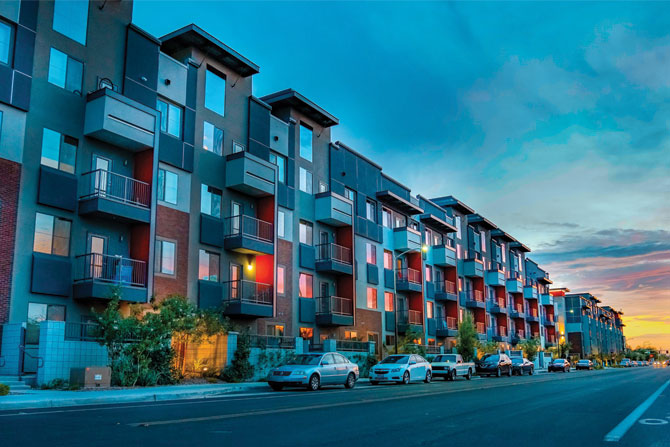The rental housing industry is ever-evolving, thanks to the coronavirus pandemic.
The shifts seen during the past two years – both small and large – in socializing, technology and workspaces have created a different lifestyle for many residents. Naturally, these changes have inspired housing providers to explore and implement new ideas within their communities.
So, what can we expect to see as we head into 2022? From innovative co-working spaces to continued advances in smart technology, here are some trends to watch for in the new year.
Outdoor utilization
When the pandemic hit, many communities got creative and looked to outdoor spaces to safely bring residents together and give communities different ways to connect. With additional space and open-air, this move provided residents with the opportunity to gather and participate in activities while social distancing. This adaptation has proved popular among many residents, making outdoor utilizations here to stay. Moving forward, community managers are likely to offer additional outdoor amenities, including gyms, places to work or complete schoolwork, kitchens, fire pits and green space with activities like bocce or cornhole. Additionally, we may see communities expanding their traditional outdoor areas like pools and seating to accommodate the needed space with more residents enjoying outdoor areas.
Work from home spaces
The pandemic has significantly impacted the concept of the workspace. Still, today, many businesses are continuing hybrid and remote work options rather than returning full-time to a traditional office space. With so many people now working from home, we’ll likely see an increased number of co-working spaces throughout apartment communities.
A cross between a business center and an office, a designated co-working space provides residents the option to work somewhere other than their own apartment. These spaces foster the same meaningful social connections as a traditional office and can even create valuable professional contacts with other residents. Spaces will range depending on the community, but we expect to see a larger variety of seating options, private rooms for meetings and more access to communal technology like printers or scanners – not to mention another aspect that has become crucial in the wake of the work-from-home trend: WiFi. Now, more than ever, having a fast and reliable network will be vital for apartment communities looking to optimize their co-working space potential.
Self-leasing
We continue to experience a historic mass adoption of technology in the housing industry – much in part thanks to virtual and self-guided tours becoming a popular solution for prospective residents to safely view a space. We’re beginning to see more innovative digital options enabling residents to “self-lease,” such as upgraded virtual tours, consumer relationship management technology, AI leasing assistants and automated income validation. Embracing this new technology not only meets residents’ needs and expectations much quicker – but also helps housing providers adapt to the current labor shortage. With the unique challenges of this shortage, these new tools allow them to optimize workflow management and streamline the leasing process, making the experience easier for both themselves and their residents.
Electric vehicle charging stations
As we’ve seen, the electric vehicle (EV) market has experienced rapid growth during the past few years and shows no signs of stopping. Eighteen car companies have all been vocal about their plans to offer EVs by 2030 – while the investment bank UBS forecasts that all new cars sold in the United States will be electric by 2040. With the rising popularity of EVs, many housing providers are installing electric charging stations in their communities. This move allows them to keep up with residents’ needs and provide them with the convenience of charging their car at home. Some urban apartment communities are even starting to offer EVs as an amenity, allowing residents to reserve and rent a vehicle for several hours to use around town. Installing charging stations also demonstrates providers’ commitment to clean energy, a topical push we’re increasingly seeing on a national and global scale. EVs produce no carbon dioxide emissions and are quieter than traditional vehicles, reducing air and noise pollution.
Smart technology
EVs parallel another critical trend in apartment living: More residents are interested in incorporating smart technology in their homes like remote thermostats, smart locks, key fobs and motion-detecting lights. Therefore, we can expect smart features to continue gaining traction alongside other advances in apartment-home technology.
As we continue to navigate the challenges of the pandemic’s long-term impacts, the apartment industry’s flexibility and innovation will shape the future of housing. By communicating their needs and shifting with the inevitable changes of a progressing society, both housing providers and residents can work together to create apartments that innovatively adapt to the world as it will be – in 2022 and well into the future.
Source: The Washington Post.
Robert Pinnegar, president and CEO of the National Apartment Association in Arlington, Va.










